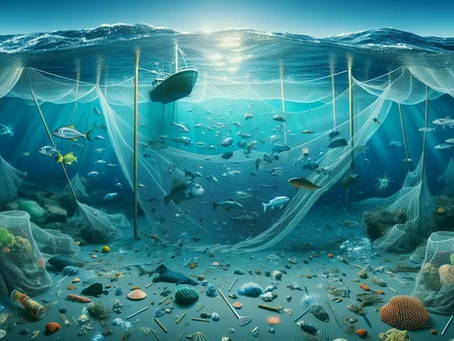Overfishing and Its Global Impact
The health of marine ecosystems is tightly bound to fishing practices worldwide. Overfishing has driven dramatic declines in fish populations, damaged marine food webs, and destroyed fragile habitats. The issue extends beyond seafood supply—it reshapes entire ecosystems and threatens the future of ocean biodiversity. This article explores the ripple effects of overfishing, the role of policy, and the power of consumer choices in restoring balance to our seas.
The Decline of Large Ocean Fish
Vanishing Giants
Populations of tuna, swordfish, and other large species have plummeted by up to 90 percent since preindustrial times. These apex predators are vital for regulating marine ecosystems, and their decline destabilizes the food web. Industrial fishing, bycatch, and habitat destruction are the main culprits, yet science-based catch limits and protected areas are offering a path to recovery.
The Role of Industrial Fishing
- Advanced fleets intensify pressure on already vulnerable species.
- Bycatch kills non-target species, including juvenile fish and marine mammals.
- Legal reforms, such as U.S. catch limits, show progress in rebuilding stocks.
Encouragingly, many species with recovery plans are rebounding, proving that science-driven management works.
Disruption of Marine Food Webs
Overfishing alters delicate food chains. As apex predators decline, smaller fish proliferate, triggering algae blooms and coral reef degradation. These imbalances harm biodiversity and local fisheries, threatening the livelihoods of coastal communities. Restoring food web balance requires protecting keystone species and safeguarding the habitats that sustain them.
Habitat Destruction from Fishing Practices
Damage to the Seafloor
Methods such as bottom trawling tear apart seafloor habitats, erasing the complex ecosystems that fish depend on. Loss of essential habitats accelerates fishery collapse and undermines climate resilience.
Restoration Efforts
- Reintroducing species like wild salmon in California’s San Joaquin River.
- Protecting underwater canyons and river systems critical to biodiversity.
- Community-led conservation driving sustainable local practices.
These initiatives highlight that ecosystems can recover when science, policy, and community align.
Policy and Fisheries Management
The Magnuson-Stevens Act
The U.S. Magnuson-Stevens Act is a cornerstone of fisheries management, requiring science-based catch limits and rebuilding plans for overfished stocks. It also emphasizes protecting essential fish habitats, balancing ecological and community needs.
Modernization Needs
- Integrating climate-ready science into fisheries law.
- Strengthening protections for critical habitats.
- Resisting rollbacks that weaken catch limits.
Modernized policies are essential for climate resilience and sustainable fisheries in the 21st century.
Climate Change Compounds the Crisis
Warming waters drive fish migrations toward cooler regions, disrupting traditional fishing grounds and creating new management challenges. Building climate-ready fisheries requires:
- Integrating climate data into management plans.
- Developing adaptive fishing zones.
- Supporting fishing communities with resources to transition sustainably.
Bycatch and Marine Mammal Threats
Marine mammals such as dolphins, seals, and whales often fall victim to bycatch. Reducing these fatalities requires:
- Bycatch reduction devices in fishing gear.
- Science-based catch limits.
- Bans on imports from nations ignoring marine protection standards.
Protecting biodiversity means ensuring fisheries coexist with ocean mammals and other vulnerable species.
The Power of Consumer Choices
Sustainable Seafood
Consumers wield influence through their purchasing decisions. Choosing seafood with certifications such as MSC or ASC directly supports responsible fisheries. Asking about sourcing and diversifying seafood diets further reduces pressure on overfished species.
Mindful Consumption
- Learn about local sustainable options.
- Support eco-friendly restaurants and fish markets.
- Advocate for plastic reduction and ocean-friendly policies.
Success Stories and Innovations
Habitat Restoration
Projects like the San Joaquin River revival demonstrate how advocacy, legal action, and restoration can bring back wild salmon and rejuvenate ecosystems.
Technological Advances
- Satellite tracking to monitor fishing fleets.
- Smart nets that reduce bycatch.
- AI-driven data analysis for fish population management.
Community and Nonprofit Leadership
Grassroots efforts—from beach cleanups to sustainable fishing cooperatives—play a vital role. Nonprofits strengthen these movements by educating the public, lobbying for stronger laws, and funding innovative conservation projects.
Conclusion
Overfishing threatens marine ecosystems, but solutions exist. Science-based catch limits, resilient policies, mindful consumer choices, and community action can restore balance. With collaboration and innovation, we can heal our oceans and secure their bounty for generations to come.

